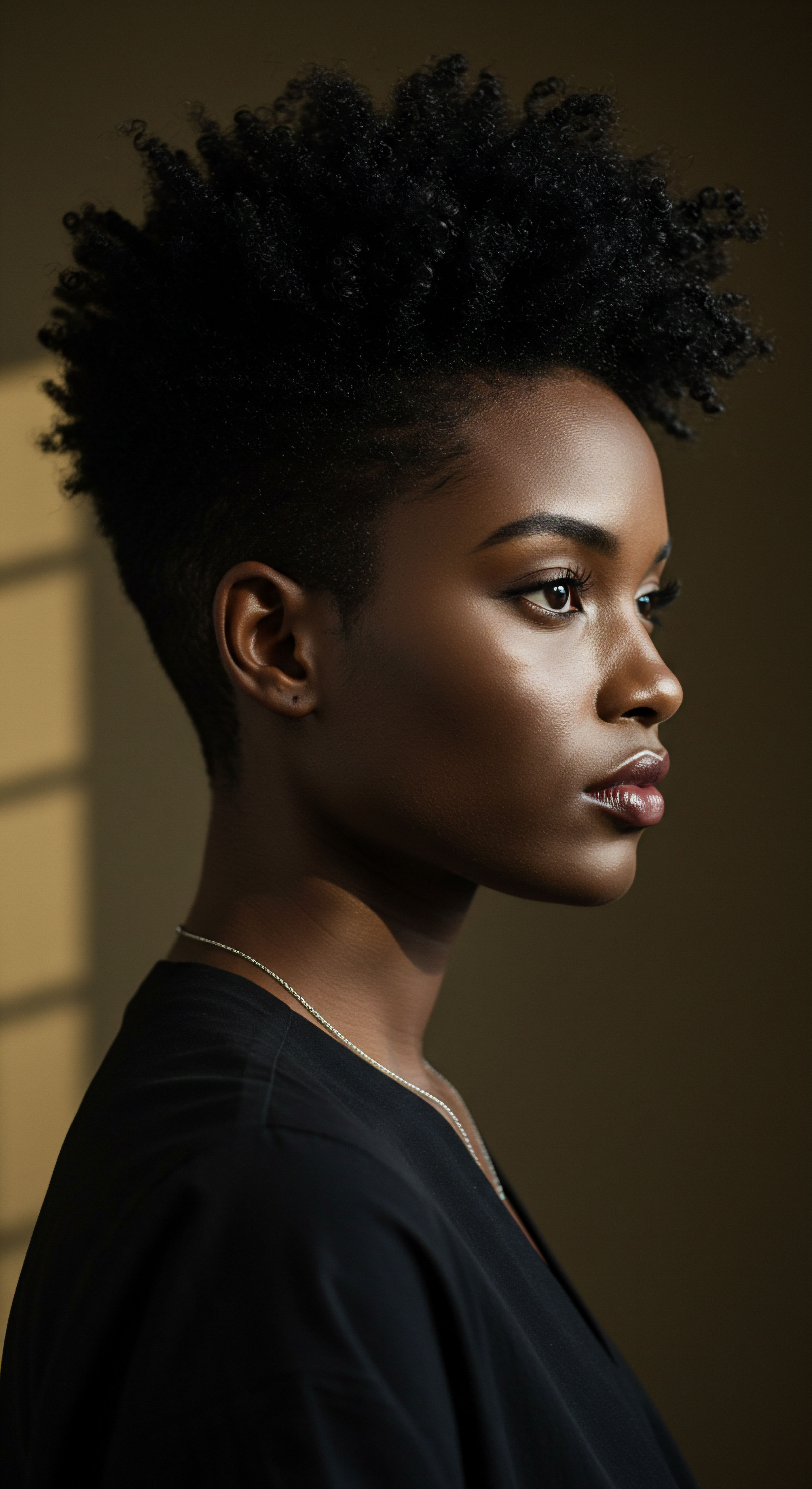
Roots
There exists a quiet dialogue between our daily rhythms and the very fabric of our being, a conversation often whispered through the strands that crown our heads. For those with coiled textures, this dialogue takes on a particular resonance, a delicate balance between inherent structure and external interaction. We often observe our hair’s spirit shift from one day to the next, a phenomenon that can leave us pondering the unseen forces at play, especially as the day surrenders to night.
Can the deliberate acts we perform before rest truly fortify these delicate coils, lending them a steadfastness that withstands the trials of slumber? This section begins a deep consideration of the foundational elements, the very makeup of coiled strands, and how our understanding of these basics paves the way for practices that build lasting strength.
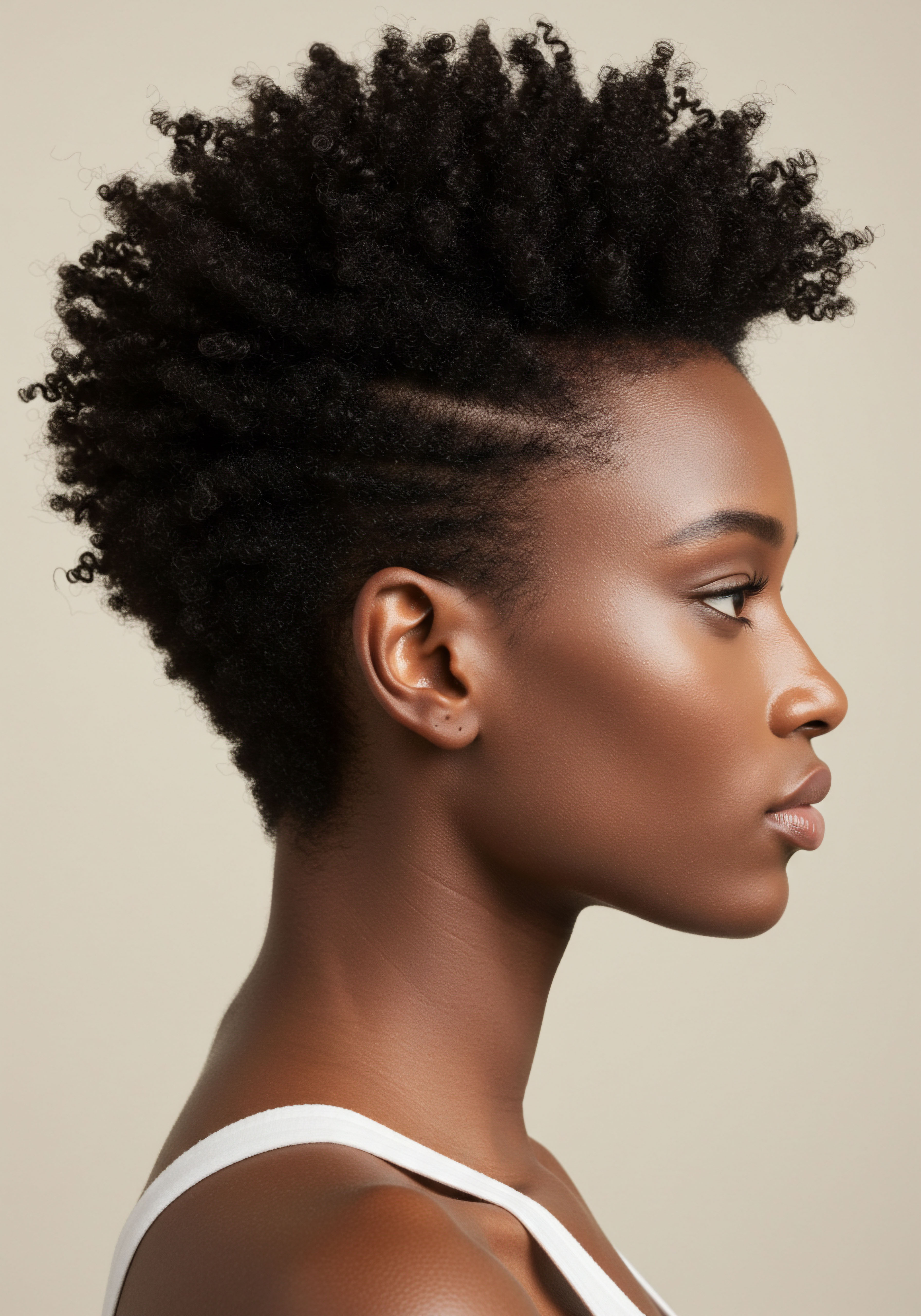
Hair’s Inner Architecture
The resilience of coiled strands begins at their core, in the remarkable architecture that defines them. Unlike straight hair, which typically emerges from a round follicle, coiled hair often originates from an oval-shaped follicle, leading to its characteristic bends and spirals. This unique shape means that the hair shaft itself is not uniformly thick; it possesses points of varying diameter along its length. These points, while contributing to the hair’s visual appeal, can also represent areas of relative weakness, making coiled hair inherently more susceptible to mechanical stress and breakage.
The outermost layer, the Cuticle, serves as the hair’s protective shield, composed of overlapping cells akin to roof tiles. When healthy, these scales lie flat, reflecting light and sealing in moisture. However, coiled hair’s natural bends mean these cuticles are often slightly raised or less uniformly laid, creating pathways for moisture to escape and leaving the inner cortex more exposed. This natural predisposition to dryness is a significant factor in the perceived fragility of coiled hair.
The inner Cortex, providing strength and elasticity, consists of keratin filaments held by various bonds. Damage to the cuticle directly compromises the cortex’s integrity, diminishing the hair’s ability to stretch and return to its original shape.
The intrinsic shape of coiled hair, emerging from an oval follicle, inherently contributes to its unique visual character and structural considerations.

Moisture’s Silent Departure
A key challenge for coiled strands stems from their inherent tendency towards dryness. The very structure that creates beautiful coils also hinders the smooth travel of natural oils (sebum) from the scalp down the entire length of the hair shaft. This uneven distribution means that the ends, particularly, often receive less natural conditioning, leaving them vulnerable. Moreover, the slightly lifted cuticles of coiled hair allow internal moisture to evaporate more readily, further contributing to dehydration.
This constant battle against moisture loss is a central theme in understanding the resilience of these hair types. When hair lacks adequate moisture, its flexibility decreases, making it more rigid and prone to snapping under stress.
Consider a study where researchers examined the mechanical properties of different hair types. While not specifically focused on sleep, findings indicate that hair, when dehydrated, requires less force to break compared to hydrated hair. This speaks to the fundamental role of moisture in maintaining hair’s structural integrity and its capacity to withstand daily interactions, including those that occur during rest. The consistent replenishment and retention of moisture are not merely about softness; they are about preserving the hair’s foundational strength.

The Night’s Unseen Stressors
As we drift into slumber, our hair, particularly coiled hair, encounters a series of stressors that can quietly diminish its resilience. The primary culprits are mechanical friction and dehydration. The constant rubbing of hair against pillowcases, especially those made of absorbent materials like cotton, can lead to a cascade of undesirable outcomes.
This friction roughens the cuticle layer, causing it to lift further, leading to increased frizz, tangles, and ultimately, breakage. The twisting and turning movements during sleep also weaken the hair shaft’s structure.
Beyond direct friction, cotton pillowcases actively draw moisture away from the hair. This absorption, coupled with coiled hair’s natural difficulty in retaining moisture, creates a cycle of dryness that can leave strands brittle and more susceptible to damage by morning. This combination of physical abrasion and moisture depletion means that for coiled hair, nighttime is not merely a period of rest, but a time of potential compromise if protective measures are not in place. The accumulation of this nightly stress, over time, can significantly impact the hair’s overall strength and appearance.
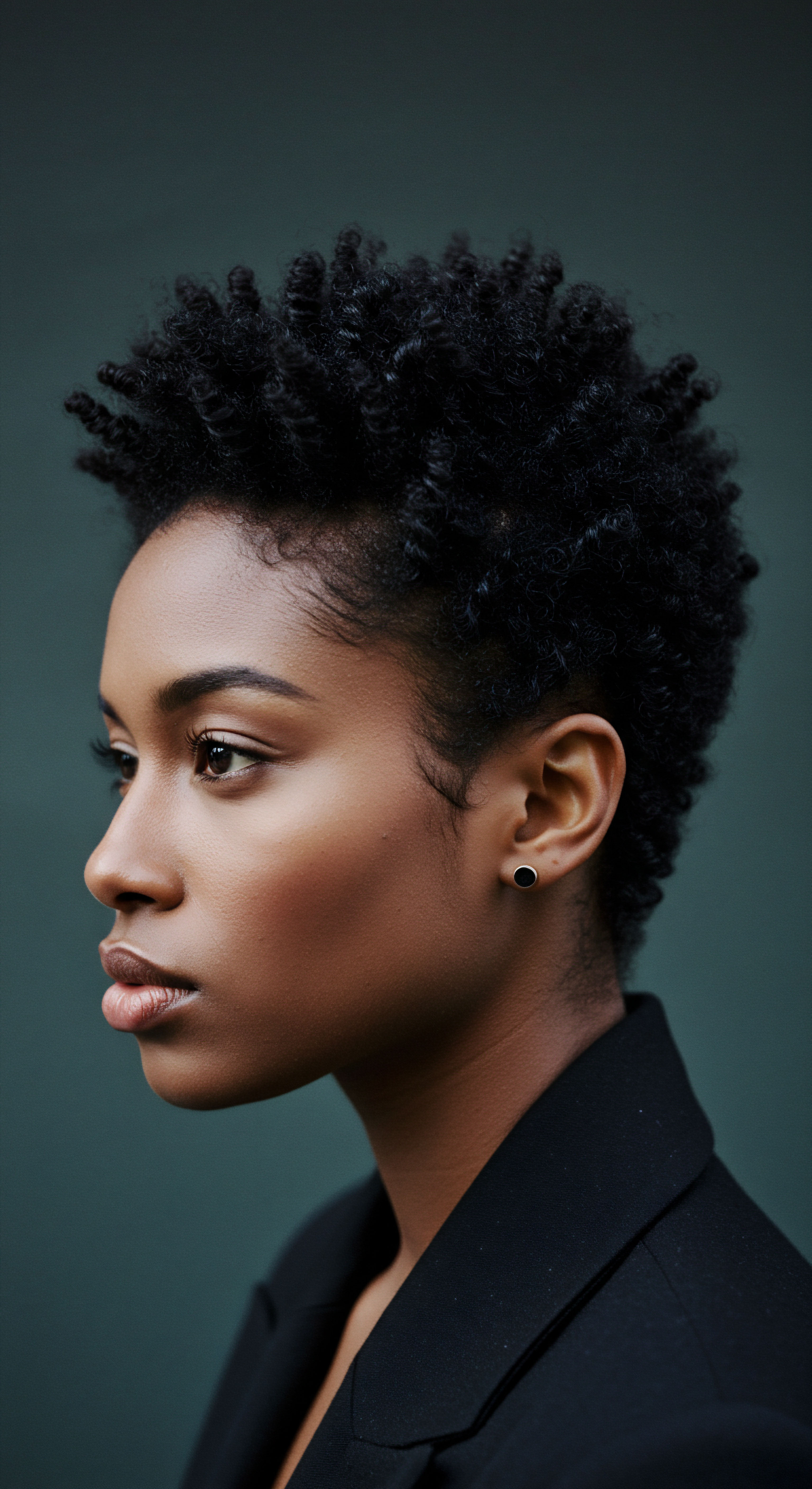
Ritual
Stepping from the foundational understanding of coiled hair’s unique structure, we arrive at the practical realm of ritual. The quiet moments before sleep hold the potential to transform our hair’s nightly experience, shifting it from a period of vulnerability to one of gentle restoration. This section offers a practical compass, guiding us through intentional practices that acknowledge and support the inherent beauty and delicacy of coiled strands as they rest. We move beyond mere prevention, aspiring to cultivate a nightly rhythm that actively enhances hair’s well-being.

What Daily Habits Support Nighttime Hair Protection?
The effectiveness of a nightly routine is deeply intertwined with daily habits. Hair that is well-cared for during waking hours is better equipped to withstand the potential stressors of sleep. This begins with gentle handling throughout the day.
For coiled hair, excessive manipulation, vigorous brushing when dry, and tight daytime styles can contribute to breakage and weakened strands. A gentle detangling process, ideally when hair is damp and coated with conditioner, minimizes stress on the delicate coils.
Hydration is a continuous effort. Regular application of leave-in conditioners, oils, or moisturizing creams throughout the day helps to seal the cuticle and replenish lost moisture, creating a more resilient canvas for nighttime protection. The choice of styling products also plays a role; opting for those that provide slip and moisture without excessive build-up ensures hair remains supple and less prone to tangling.
- Detangling ❉ Perform with care, preferably on damp hair with a wide-tooth comb.
- Hydration ❉ Consistently apply moisturizing products to maintain suppleness.
- Styling ❉ Choose styles that minimize tension and physical stress on the hair.
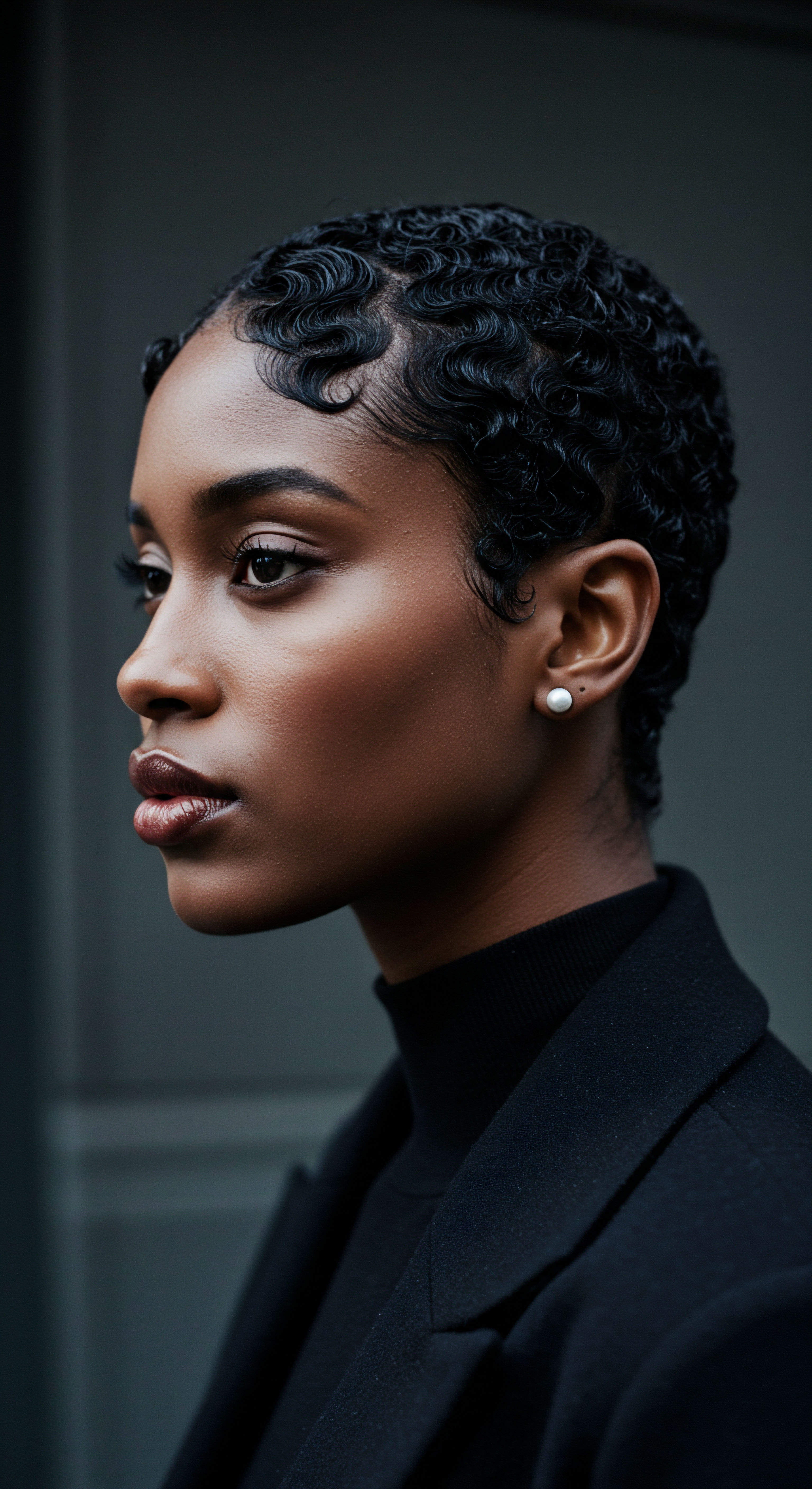
Selecting the Right Sleeping Surface
The surface upon which our hair rests during sleep wields considerable influence over its morning condition. Traditional cotton pillowcases, with their absorbent and abrasive fibers, are a significant source of nightly damage for coiled hair. They not only draw moisture away from the hair but also create friction that leads to frizz, tangles, and breakage.
The conscious choice of a sleeping surface can significantly mitigate these issues. Silk and Satin pillowcases are widely recommended for coiled hair due to their smooth, low-friction surfaces. These materials allow hair to glide rather than snag, reducing mechanical stress on the cuticle.
A study comparing the friction properties of different fabrics found that silk exhibited significantly lower friction coefficients compared to cotton, even high thread-count cotton. This reduced friction translates directly into less abrasion on the hair cuticle, helping to preserve its integrity and prevent the lifting of scales that leads to frizz and breakage. Furthermore, silk and satin are less absorbent than cotton, meaning they help hair retain its natural moisture and any applied products, rather than stripping them away. This dual benefit of reduced friction and moisture retention makes them an essential element in a protective nightly routine.
| Material Cotton |
| Friction Level High |
| Moisture Absorption High |
| Impact on Coiled Hair Increased frizz, tangles, dryness, breakage |
| Material Silk |
| Friction Level Low |
| Moisture Absorption Low |
| Impact on Coiled Hair Reduced friction, moisture retention, preserved curl pattern |
| Material Satin |
| Friction Level Low |
| Moisture Absorption Low |
| Impact on Coiled Hair Similar benefits to silk, often more accessible |
| Material Selecting the right pillowcase is a fundamental step in nightly hair protection. |

Protective Styling for Sleep
Beyond the pillowcase, how hair is styled before bed offers another layer of protection. The aim is to minimize movement, prevent tangling, and keep coils grouped together. Loose protective styles shield hair from friction and help maintain its definition.
One widely adopted method is the Pineapple Technique, where hair is gathered loosely at the very top of the head and secured with a soft scrunchie or hair tie. This position lifts the bulk of the hair off the pillow, preventing crushing and flattening, especially for longer or more voluminous coils. The looseness of the tie is paramount to avoid tension on the scalp and hair follicles, which could lead to damage or even traction alopecia over time.
Other effective protective styles include loose braids or twists, particularly for shorter or less voluminous hair. These styles help to keep strands aligned and prevent them from tangling into a matted mess overnight. For those with very tightly coiled hair, Bantu Knots can offer exceptional protection and definition, preserving the coil pattern while minimizing friction. It is important that hair is moisturized but not wet when styled for sleep, as wet hair is significantly more fragile and prone to breakage.
Conscious product choices and careful styling before bed are essential components of a nightly hair care practice.

Overnight Treatments and Accessories
Nighttime presents a unique opportunity for deep conditioning and targeted treatments. Applying a lightweight hair oil or a leave-in conditioner before bed allows products to penetrate the hair shaft over several hours, offering sustained hydration and nourishment. This can be particularly beneficial for coiled hair, which often struggles with retaining moisture.
Beyond products, accessories play a significant role. Silk Bonnets or headscarves serve as an additional barrier between hair and bedding, providing comprehensive protection from friction and helping to seal in moisture. Bonnets are particularly useful for keeping hair contained and preventing it from moving excessively during sleep. When selecting these accessories, materials like satin or silk are preferred for their smooth surfaces.
While some may view bonnets as purely functional, their cultural significance, particularly within Black communities, adds a deeper layer to their utility. Historically, head coverings have been used for protection, hygiene, and as expressions of identity. This lineage underscores the enduring wisdom behind protecting hair during rest.

Relay
As the soft light of dawn touches the horizon, we move from the practical rhythm of nightly care to a deeper contemplation of its profound impact. This section extends our consideration beyond the immediate benefits, reaching into the intricate interplay of biology, culture, and long-term well-being. How do these consistent, gentle acts before sleep not only preserve but actively build the resilience of coiled strands, influencing their very capacity for sustained strength and vitality? We will examine the underlying scientific principles and the broader context that lend nightly routines their enduring power.
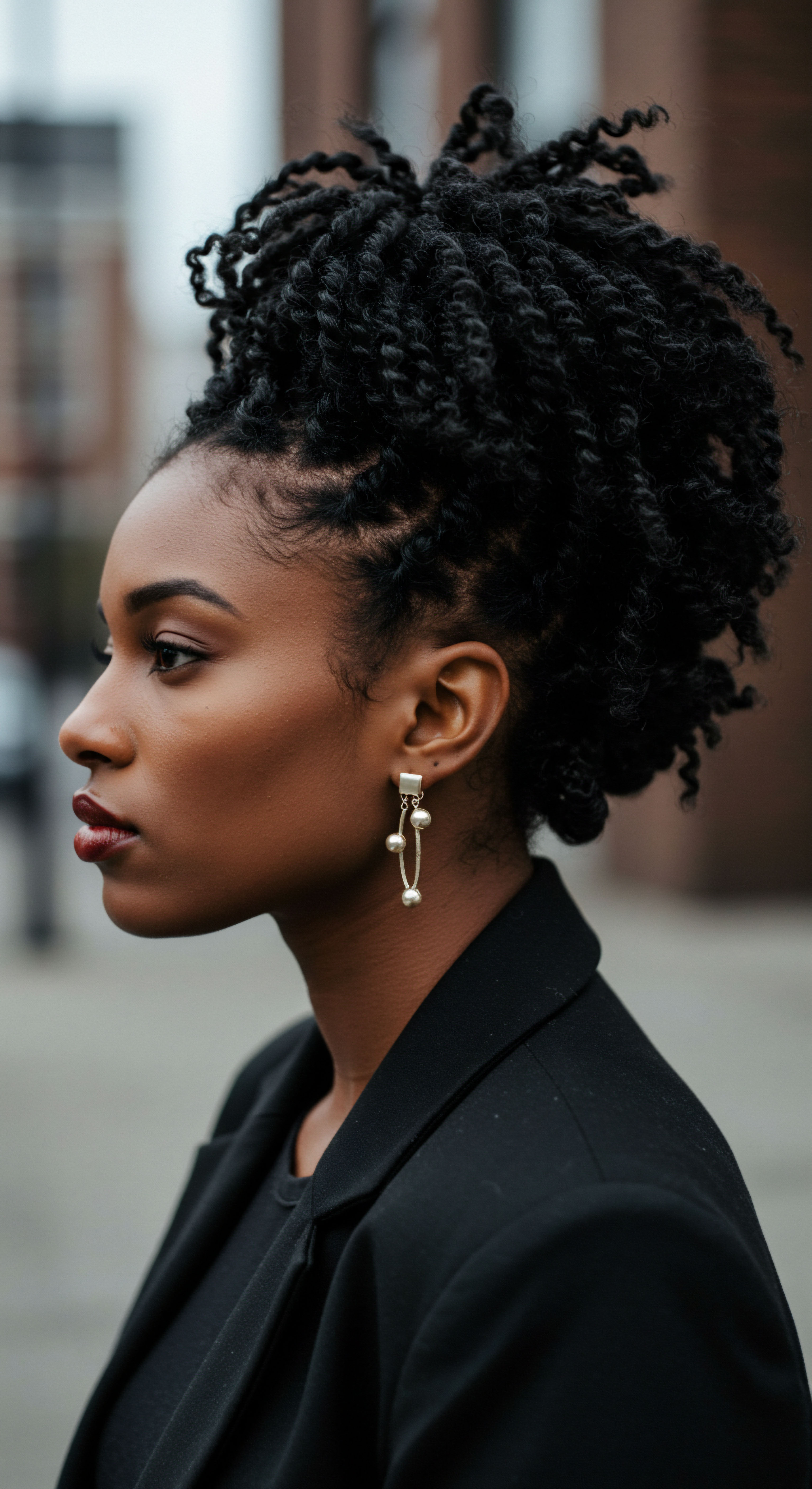
Does Nightly Hair Protection Influence Hair Follicle Health?
The health of the hair shaft is inextricably linked to the well-being of its origin point ❉ the hair follicle. While much discussion centers on the visible hair, the follicle, nestled within the scalp, is the living engine of hair growth. Mechanical stress, such as constant pulling or friction, can transmit tension directly to these follicles.
Research on Traction Alopecia (TA), a preventable form of hair loss, primarily links it to tight hairstyles that exert prolonged tension on hair follicles. However, a less commonly recognized aspect is “nocturnal traction,” where habits like sleeping with tight curlers or very constrained styles can contribute to follicle stress. A study presented a case series of patients where hair loss along the temporal scalp correlated with the consistent use of tight curlers overnight. This suggests that even seemingly innocuous nighttime styling choices, if consistently applying tension, can have a cumulative negative effect on follicle health, potentially leading to weakened hair production and, in severe cases, hair loss.
Conversely, by reducing friction and tension through protective nightly routines—such as using silk pillowcases or loose styles—we alleviate undue stress on the follicles. This allows the scalp’s natural processes of cellular repair and regeneration, which are heightened during sleep, to proceed without impediment. A healthy follicle, free from chronic stress, is better positioned to produce strong, resilient hair fibers, contributing to the overall density and vitality of coiled strands over time.
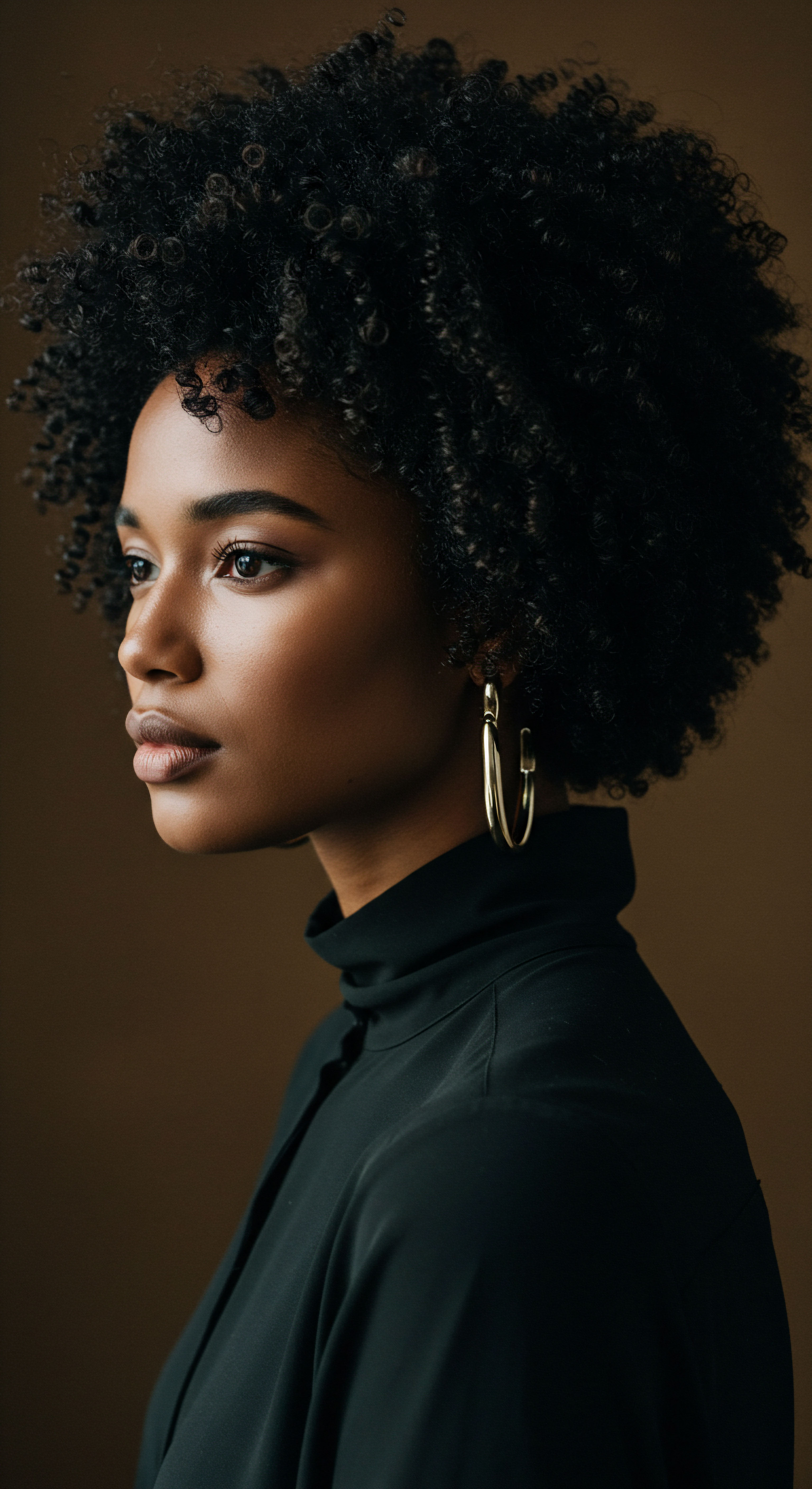
The Biochemical Symphony of Sleep and Hair Growth
Sleep is not merely a period of inactivity; it is a time of profound physiological restoration. This includes processes vital for hair health. During adequate sleep, the body regulates crucial hormones, such as growth hormone and melatonin, both of which play roles in promoting hair follicle activity and cell regeneration. Melatonin, often associated with sleep regulation, has also been shown to influence hair growth.
A consistent lack of sleep, or chronic sleep deprivation, can disrupt this delicate hormonal balance, potentially leading to slower hair growth or pushing more follicles into the resting phase prematurely, resulting in increased shedding. Moreover, sleep deprivation can elevate stress hormone levels, such as cortisol, which are known to contribute to hair loss, particularly a temporary form known as telogen effluvium. Beyond hormones, proper sleep ensures adequate blood circulation to the scalp, delivering essential oxygen and nutrients to the hair follicles. When circulation is compromised due to poor sleep, the follicles may not receive the nourishment required for optimal growth and repair.
Consider the findings of a 2022 research publication in the Annals of Medicine and Surgery journal, which indicated that individuals with sleep disorders face a higher likelihood of experiencing hair loss compared to those without such conditions. While the precise mechanisms continue to be explored, this association underscores the systemic impact of sleep on the body’s regenerative capacities, including those governing hair vitality. The nightly routine, therefore, is not just about external protection; it contributes to an internal biochemical environment conducive to robust hair growth and sustained resilience.
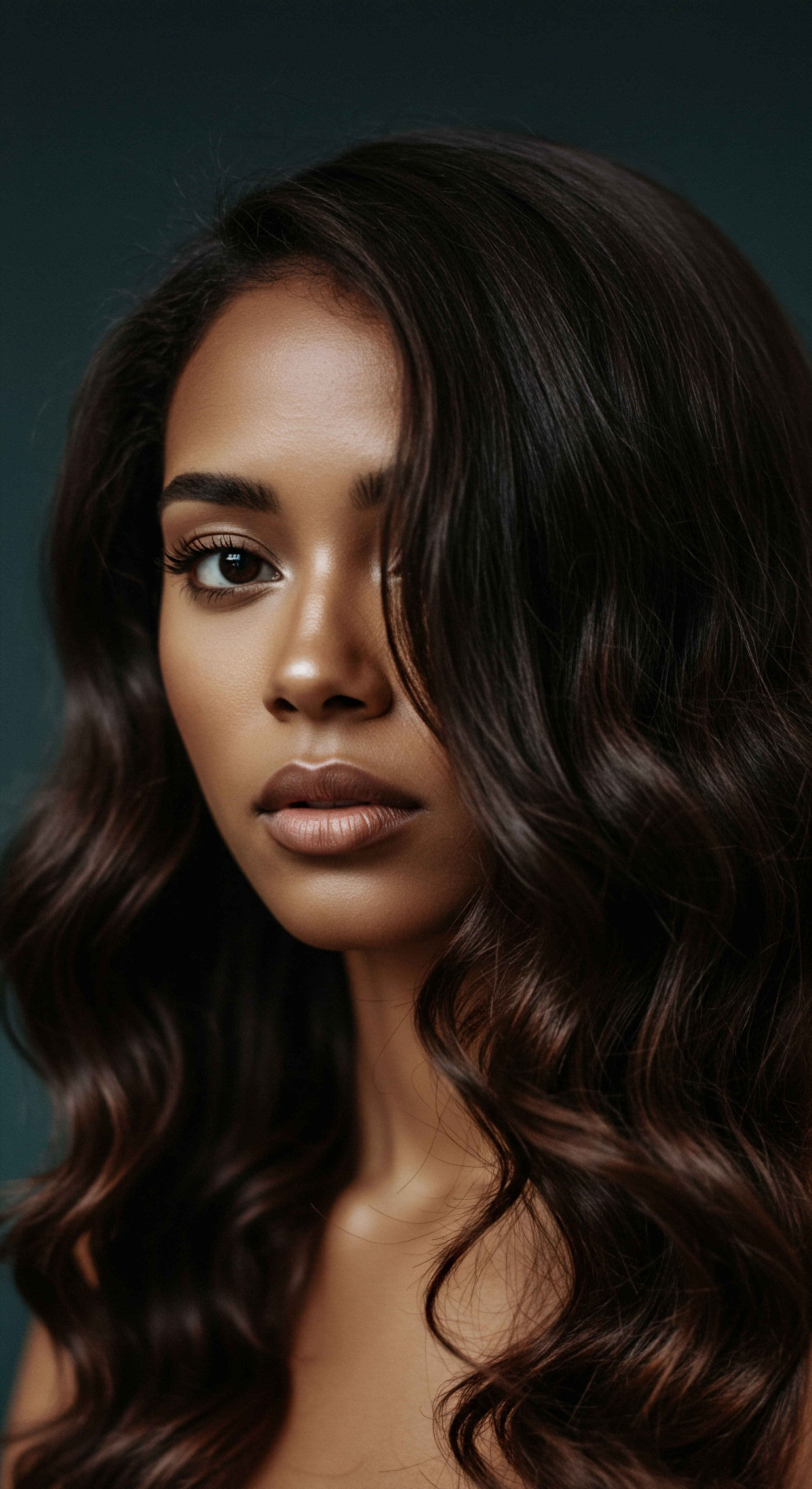
Cultural Wisdom and Modern Science Converge
The practice of protecting hair at night, particularly coiled textures, holds deep roots in cultural traditions, predating modern scientific understanding. For centuries, various communities, especially those of African descent, have employed head wraps, bonnets, and specific styling techniques to preserve their hair during sleep. These practices were born of practical necessity and ancestral knowledge, recognizing the unique needs of coiled hair long before laboratories could dissect cuticle structures or measure friction coefficients.
For instance, the use of bonnets and headwraps, often made from materials like satin or silk, has a rich history, serving not only to protect hairstyles but also to prevent moisture loss and reduce friction. While some European traditions also saw women wearing “sleep caps” in the mid-1800s for warmth, the consistent and culturally specific application of these protective coverings for textured hair has a distinct lineage. This historical practice aligns remarkably with contemporary trichological advice. Modern science now provides the empirical data to explain why these time-honored methods are so effective ❉ the smooth surface of silk or satin minimizes the mechanical abrasion that damages the cuticle, while the enclosed environment helps to retain precious moisture.
This convergence of cultural wisdom and scientific validation offers a powerful testament to the efficacy of a consistent nightly routine. It speaks to a deep, intuitive understanding passed down through generations, now supported by detailed research into hair’s delicate biomechanics and physiological needs. The ritual, therefore, is not merely a superficial act but a deeply informed practice that contributes to the enduring resilience of coiled strands, honoring both heritage and modern discovery.
| Factor Mechanical Stress |
| Nightly Routine Component Silk/Satin Pillowcases, Loose Styles |
| Mechanism of Benefit Reduces friction, prevents tangling and breakage |
| Long-Term Impact on Resilience Maintains cuticle integrity, less thinning |
| Factor Dehydration |
| Nightly Routine Component Moisturizing Products, Bonnets/Scarves |
| Mechanism of Benefit Seals in moisture, prevents evaporation |
| Long-Term Impact on Resilience Preserves elasticity, reduces brittleness |
| Factor Follicle Health |
| Nightly Routine Component Reduced Tension, Healthy Sleep |
| Mechanism of Benefit Minimizes "nocturnal traction," supports cellular repair |
| Long-Term Impact on Resilience Promotes consistent, strong hair growth |
| Factor Biochemical Balance |
| Nightly Routine Component Adequate Sleep Duration |
| Mechanism of Benefit Regulates growth hormones, reduces stress hormones |
| Long-Term Impact on Resilience Supports hair growth cycle, minimizes shedding |
| Factor A consistent nightly routine addresses multiple facets of hair health, building lasting strength. |
The deep wisdom of ancestral hair care practices finds a remarkable parallel in modern scientific findings, underscoring the enduring value of nightly hair protection.

Reflection
As the soft light of morning touches our coils, we carry forward the quiet work of the night. The dedication to a consistent nightly routine, a gentle tending to the very structure of our hair, extends beyond mere surface aesthetics. It becomes a dialogue with the past, a partnership with science, and a promise to the future of our strands.
The resilience we seek in our coiled hair is not an elusive quality; it is cultivated, nurtured, and affirmed through the steady rhythm of intentional care as the world sleeps. Each night’s gentle acts contribute to a legacy of strength, a quiet affirmation of beauty that endures.

References
- I Love Riccio. (n.d.). How not to damage curly hair at night. Retrieved from https://www.ilovericcio.it/en/blog/come-non-rovinare-i-capelli-ricci-di-notte
- Color Wow. (n.d.). Reviving Your Curls ❉ A Step-by-Step Guide on How to Fix Damaged Curly Hair. Retrieved from https://www.colorwowhair.com/blog/how-to-fix-damaged-curly-hair
- Clinikally. (2024, July 16). Impact of Sleep Deprivation on Hair Health. Retrieved from https://www.clinikally.com/blogs/articles/impact-of-sleep-deprivation-on-hair-health
- I Love Riccio. (n.d.). How to take care of curly hair in men. Retrieved from https://www.ilovericcio.it/en/blog/come-prendere-cura-capelli-ricci-uomo
- Rossano Ferretti Parma. (n.d.). The Truth About Sleeping with Wet Hair. Retrieved from https://www.rossanoferrettiparma.com/blogs/hair-care/sleeping-with-wet-hair
- Esteworld. (n.d.). Does Sleeping on Only One Side Cause Hair Loss? Retrieved from https://www.esteworld.com/blog/does-sleeping-on-only-one-side-cause-hair-loss
- Kérastase. (n.d.). The Scientific Truth Behind Curly Hair. Retrieved from https://www.kerastase-usa.com/hair-guide/the-scientific-truth-behind-curly-hair.
- Healthshots. (2024, September 27). 8 tips to prevent hair loss while sleeping. Retrieved from https://www.healthshots.com/beauty/hair-care/how-to-prevent-hair-loss-while-sleeping/
- Royal Locks Curl Care. (2022, March 9). Sleeping With Curls? How to Keep Curls Overnight. Retrieved from https://royallockscurlcare.com/blogs/news/sleeping-with-curls-how-to-keep-curls-overnight
- Quora. (2023, January 10). My hair is very thick and curly, POC have told me my hair is extremely close to theirs. How do I wear protective styles without cultural appropriation? Retrieved from https://www.quora.com/My-hair-is-very-thick-and-curly-POC-have-told-me-my-hair-is-extremely-close-to-theirs-How-do-I-wear-protective-styles-without-cultural-appropriation
- How Sleep Is Affecting Your Hair? (n.d.). Retrieved from https://www.medylife.com/blog/how-sleep-is-affecting-your-hair/
- DubsLabs. (n.d.). How To Sleep With Curly Hair. Retrieved from https://dubslabs.com/blogs/news/how-to-sleep-with-curly-hair
- Silkie. (n.d.). Sleep Masks and Hair Care ❉ Prevent Breakage and Frizz. Retrieved from https://shopsilkie.com/blogs/news/sleep-masks-and-hair-care-prevent-breakage-and-frizz
- PureWow. (2024, July 11). How to Sleep with Curly Hair & Wake Up Without Frizz. Retrieved from https://www.purewow.com/beauty/how-to-sleep-with-curly-hair
- Gupta, A. & Goyal, P. (2021). Techniques Used for Hair Style Maintenance while Sleeping May Be a Risk Factor for Traction Alopecia. Skin Appendage Disorders, 7 (2), 114-116. Retrieved from https://www.ncbi.nlm.nih.gov/pmc/articles/PMC8016484/
- Cosmopolitan. (2024, September 12). Overnight Haircare Tips for Afro and Coily Hair. Retrieved from https://www.cosmopolitan.com/uk/beauty-hair/hair/a45183378/overnight-haircare-tips-afro-coily-hair/
- The Correlation We All Need to Know. (n.d.). Retrieved from https://www.nutrafol.com/blog/sleep-hair-growth/
- Wella Blog. (2025, May 9). Your Night-Time Curly Hair Routine. Retrieved from https://www.wella.com/professional/blog/your-night-time-curly-hair-routine
- Science works to demystify hair and help it behave. (2024, November 14). Retrieved from https://www.snexplores.org/article/science-works-demystify-hair-and-help-it-behave
- Healthline. (2021, September 6). How to Sleep with Long Hair to Protect the Health of Your Hair. Retrieved from https://www.healthline.com/health/how-to-sleep-with-long-hair
- Silkie. (n.d.). The Link Between Sleep Position and Hair Damage ❉ What You Need to Know. Retrieved from https://shopsilkie.com/blogs/news/the-link-between-sleep-position-and-hair-damage-what-you-need-to-know
- Slipssy. (2025, April 16). The Long-Term Effects of Slipssy ❉ Protecting Your Hair Follicles, Pres. Retrieved from https://slipssy.com/blogs/sleep-and-hair-health/the-long-term-effects-of-slipssy-protecting-your-hair-follicles-preserving-hair-integrity
- Byrdie. (2022, September 27). The Significance and History of Bonnets. Retrieved from https://www.byrdie.com/bonnet-history-6746824
- Quora. (2020, December 27). I’m white, but I have really curly hair that I don’t know what to do with. Is it cultural appropriation if I were to wear a bonnet? Retrieved from https://www.quora.com/I-m-white-but-I-have-really-curly-hair-that-I-don-t-know-what-to-do-with-Is-it-cultural-appropriation-if-I-were-to-wear-a-bonnet
- Trichorrhexis Nodsa – a weakened white dot along your hair shaft. (2022, May 24). Retrieved from https://halohaircare.com/blogs/hair-health/trichorrhexis-nodsa-a-weakened-white-dot-along-your-hair-shaft
- Holistic Hair®. (n.d.). The Anatomy of the Scalp & Hair and the importance of Shampooing & Con. Retrieved from https://holistichair.co.nz/blogs/news/the-anatomy-of-the-scalp-hair-and-the-importance-of-shampooing-conditioning
- Curl Care. (2024, March 12). How do you sleep with curls? Retrieved from https://curlcare.co/blogs/curl-care/how-do-you-sleep-with-curls
- L’Oréal Paris. (2022, August 17). How Does Sleep Affect Hair Health & Growth? Retrieved from https://www.lorealparisusa.com/beauty-magazine/hair-care/hair-health/sleep-and-hair-health